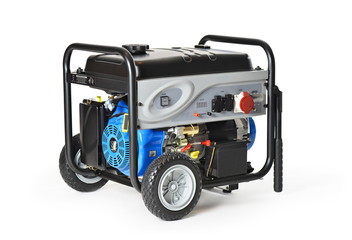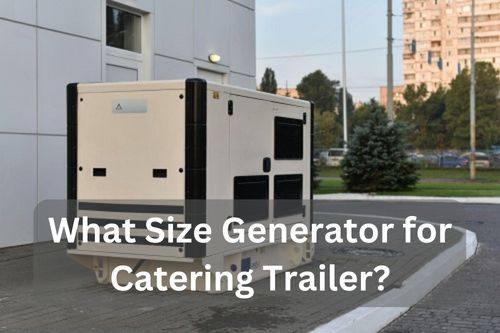
Propane generators are a popular choice for those who want a source of backup power during power outages or for those who need a portable power source for outdoor activities like camping or tailgating. With a propane generator, you have the ability to generate electricity without the need for an electrical outlet.

But have you ever wondered how these generators turn propane into electricity? That’s where the fuel system comes into play. Understanding the components and how they work together is crucial for the proper and safe operation of your generator. That’s why we’re here to give you an overview of the key components of a propane generator’s fuel system.
Components of a Propane-Powered Generator’s Fuel System
The fuel system of a propane-powered generator is responsible for storing, delivering, and mixing propane with air to create a flammable mixture that powers the generator’s engine. The fuel system consists of several key components, each with its own specific function. These components work together to provide the generator with a reliable source of fuel.
1. Propane Storage Tank
This is where the fuel for your generator is stored, waiting to be used.
There are a variety of propane tank sizes and types available, ranging from small tanks for portable grills to large tanks for industrial use. When choosing a propane tank for your generator, there are a few factors to consider. You’ll want to think about the size of your generator and the length of time you’ll need it to run, as well as where you’ll be using the generator and whether you’ll need to transport it.
It’s important to choose a tank that is appropriately sized for your generator. A tank that is too small won’t provide enough fuel to run the generator for the desired amount of time, while a tank that is too large will be unnecessary and take up extra space.
2. Regulating the Pressure
Meet the guardian of your generator’s fuel system – the regulator! This important component is responsible for regulating the pressure of the propane as it flows from the tank to the generator. Without proper pressure regulation, the generator may not function properly or could even become damaged.
The regulator is a crucial component in the fuel system because it ensures that the propane is supplied at the correct pressure. If the pressure is too high, it could cause damage to the generator, while if the pressure is too low, the generator won’t receive enough fuel to operate correctly. Maintaining proper pressure is crucial for the safe and efficient operation of your propane generator.
There are different types of regulators available, including low-pressure and high-pressure regulators. The type of regulator you choose will depend on the specifics of your generator and the type of fuel system it uses. It’s important to choose a regulator that is compatible with your generator and to follow the manufacturer’s guidelines for proper installation and maintenance.
3. Fuel Delivery System
Imagine trying to pour water from a bucket without a spout – not easy, right? The same concept applies to the fuel delivery system in a propane-powered generator. The fuel line is the “spout” that carries the propane from the tank to the generator, and it’s an important component in the fuel system.
The fuel line is typically made from durable materials, such as stainless steel or nylon, to withstand the pressure and heat of the propane. Some fuel lines are rigid, while others are flexible. A flexible fuel line offers a few key benefits that can make it a better choice for certain applications.
For starters, a flexible fuel line can make it easier to install the generator in tight spaces or maneuver it around obstacles. It can also reduce the chances of the fuel line becoming damaged since it can bend and flex without breaking. Additionally, a flexible fuel line can help to minimize vibration, which can be a common problem in propane generators.
4. Carburetion Process
Have you ever wondered how a propane-powered generator creates the energy needed to generate power? The magic happens in the carburetor, where the propane and air are mixed to create a flammable mixture. This mixture is then ignited, creating the energy that powers the generator.
The carburetor plays a crucial role in the fuel system by ensuring that the correct mixture of propane and air is being used. The mixture of propane and air must be just right in order for the generator to function efficiently and safely. If there’s too much propane, the mixture will be too rich and the generator will not run correctly. If there’s too much air, the mixture will be too lean and the generator may not generate enough power.
The carburetor is typically adjustable, allowing you to fine-tune the mixture of propane and air to achieve the optimal balance. Proper mixing ratios are important to ensure the safe and efficient operation of the generator, as well as to reduce emissions and extend the life of the generator.
5. Ignition System
The ignition system is responsible for starting and maintaining the operation of the generator’s engine.
At its core, the ignition system consists of several key components, including the spark plug, ignition coil, and ignition control module. The spark plug generates the spark that ignites the mixture of propane and air in the carburetor. The ignition coil takes the low voltage from the battery and transforms it into the high voltage needed to spark the mixture. And the ignition control module manages the timing of the spark, ensuring that it occurs at the right moment for the engine to start and run smoothly.
It’s important to keep the ignition system in good working condition, as any problems with the system can prevent the generator from starting or cause it to run poorly. Regular maintenance, such as replacing worn spark plugs, can help to keep the ignition.
Wrapping Up
The fuel system of a propane-powered generator is an essential component that ensures the generator operates efficiently. By understanding the key components of the fuel system, such as the propane storage tank, regulator, fuel delivery system, carburetion process, and ignition system, you can better understand how the generator works.
It’s important to regularly maintain the fuel system to ensure that it continues to operate properly and safely. This includes checking the propane tank, fuel lines, and other components for leaks, damage, or wear and tear. Regular maintenance can also help prolong the life of your generator and keep it running smoothly.






